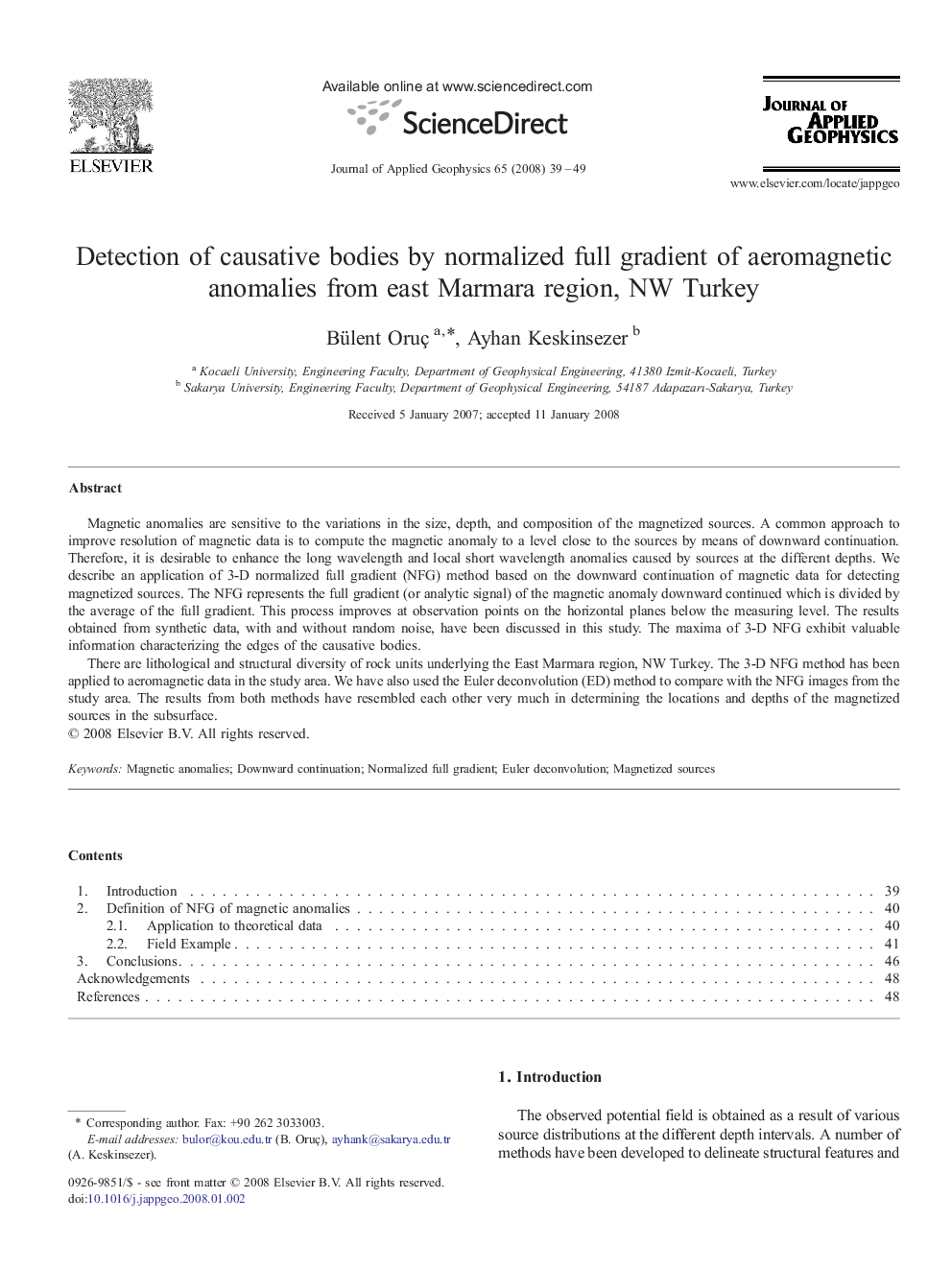| کد مقاله | کد نشریه | سال انتشار | مقاله انگلیسی | نسخه تمام متن |
|---|---|---|---|---|
| 4740890 | 1358614 | 2008 | 11 صفحه PDF | دانلود رایگان |

Magnetic anomalies are sensitive to the variations in the size, depth, and composition of the magnetized sources. A common approach to improve resolution of magnetic data is to compute the magnetic anomaly to a level close to the sources by means of downward continuation. Therefore, it is desirable to enhance the long wavelength and local short wavelength anomalies caused by sources at the different depths. We describe an application of 3-D normalized full gradient (NFG) method based on the downward continuation of magnetic data for detecting magnetized sources. The NFG represents the full gradient (or analytic signal) of the magnetic anomaly downward continued which is divided by the average of the full gradient. This process improves at observation points on the horizontal planes below the measuring level. The results obtained from synthetic data, with and without random noise, have been discussed in this study. The maxima of 3-D NFG exhibit valuable information characterizing the edges of the causative bodies.There are lithological and structural diversity of rock units underlying the East Marmara region, NW Turkey. The 3-D NFG method has been applied to aeromagnetic data in the study area. We have also used the Euler deconvolution (ED) method to compare with the NFG images from the study area. The results from both methods have resembled each other very much in determining the locations and depths of the magnetized sources in the subsurface.
Journal: Journal of Applied Geophysics - Volume 65, Issue 1, 4 June 2008, Pages 39–49